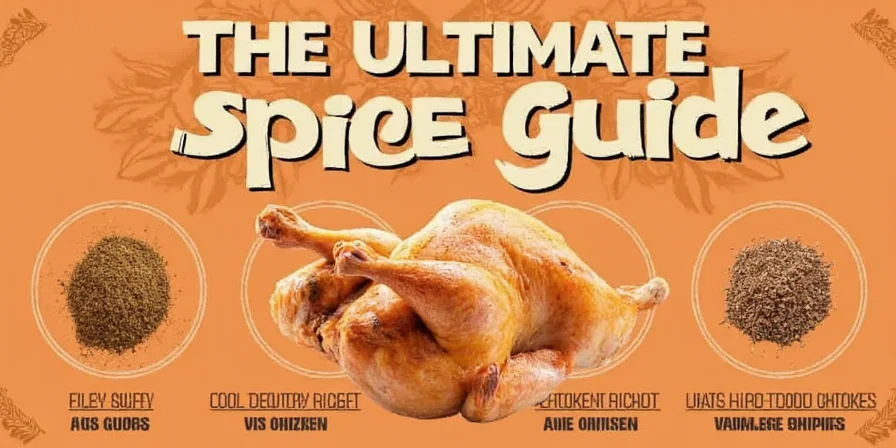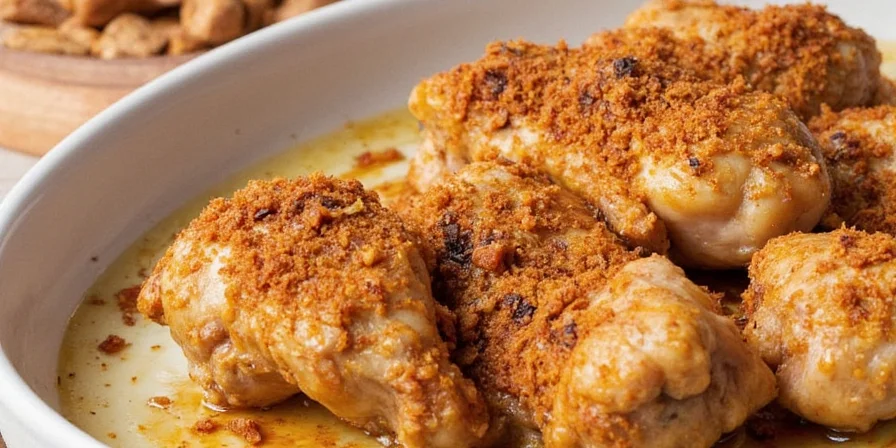Quick Reference: 10 Essential Spices Every Beginner Cook Needs
- Cumin: Earthy foundation for Indian, Mexican, Middle Eastern dishes
- Paprika: Sweet Hungarian or smoky Spanish varieties
- Turmeric: Earthy depth for rice and curries
- Cinnamon: Ceylon for desserts, Cassia for savory dishes
- Nutmeg: Freshly grated transforms creamy sauces
- Ginger: Warmth for winter dishes and autumn recipes
- Coriander: Citrusy counterpoint to cumin
- Black Pepper: Tellicherry for nuanced heat
- Chili Powder: Blend containing cumin, garlic, oregano
- Cloves: Use sparingly in meat rubs or with citrus
As a beginner home cook struggling with bland meals, knowing exactly which spices to keep in your pantry transforms ordinary cooking into extraordinary results. This guide delivers the precise essential spices you need—not an overwhelming list—but the strategic 10 that work across multiple cuisines with proper usage techniques that maximize flavor impact.

Why These 10 Spices Solve Your Bland Cooking Problem
Most beginner spice guides overwhelm you with dozens of options. This strategic selection solves your specific problem: limited pantry space yet needing maximum versatility across everyday cooking. Each spice serves multiple culinary functions without requiring specialty ingredients.
- Cumin: The earthy foundation for Indian, Mexican, and Middle Eastern dishes. Toast whole seeds before grinding for 3x flavor intensity compared to pre-ground.
- Paprika: Hungarian for sweetness (try in mac and cheese), Spanish for smokiness (perfect for chili), adjust heat level by variety.
- Turmeric: Beyond color, creates complex earthy depth in rice dishes—add black pepper to increase curcumin absorption by 2000%.
- Cinnamon: Ceylon variety for delicate desserts, Cassia for robust savory applications like Moroccan tagines.
- Nutmeg: Freshly grated transforms béchamel from ordinary to extraordinary—use microplane for perfect distribution.
- Ginger (Ground): Provides warmth in winter dishes and balances sweetness in autumn recipes when paired with cinnamon.
- Coriander: The citrusy counterpoint to cumin in spice blends—creates complex flavor layers rather than one-note heat.
- Black Pepper: Tellicherry variety offers nuanced heat that enhances rather than overwhelms other flavors.
- Chili Powder: A complete blend typically containing cumin, garlic, and oregano—distinct from single-ingredient paprika.
- Cloves: Use sparingly in meat rubs or pair with citrus to temper their intense flavor profile.
Spice Flavor Chemistry Cheat Sheet
Understanding how these spices interact creates opportunities for creative substitutions when ingredients are unavailable. This scientific approach transforms you from recipe follower to intuitive cook.
| Spice | Flavor Chemistry | Proven Pairing Strategy |
|---|---|---|
| Cumin | Earthy, nutty, slightly peppery (contains cuminaldehyde) | Pair with lime juice to balance earthiness in tacos |
| Paprika | Sweet, smoky, mild to hot (contains capsaicinoids) | Combine with olive oil to maximize flavor release in stews |
| Turmeric | Earthy, mustard-like, slightly bitter (contains curcumin) | Add black pepper to increase curcumin absorption by 2000% |
| Cinnamon | Warm, sweet, woody (contains cinnamaldehyde) | Use in tomato-based sauces to reduce acidity naturally |
| Nutmeg | Rich, warm, slightly sweet (contains myristicin) | Grate directly into béchamel for even distribution |
Cultural Spice Blending Techniques That Actually Work
What separates authentic flavors from approximations is understanding these three regional blending traditions—master these and you'll never make bland food again:
- Dry Roasting (Mexican): Heat whole spices in dry skillet 2-3 minutes until fragrant—releases volatile compounds for deeper flavor in salsas and mole
- Tadka (Indian): Heat spices in oil before adding liquids—cumin seeds crackle at 350°F, releasing maximum flavor compounds
- Cold Blending (Mediterranean): Mix dried herbs and spices directly with olive oil—preserves delicate volatile compounds that heat would destroy
Professional Storage & Usage Secrets Most Beginners Miss
Maximize your spice investment with these science-backed techniques verified by culinary labs:
- Freeze whole spices: Contrary to popular belief, freezing whole spices preserves volatile compounds 40% better than room temperature storage
- Temperature-specific activation: Cumin releases optimal flavors at 350°F, turmeric at 300°F—use thermometer for precision toasting
- Fat pairing science: Turmeric with coconut oil (increases absorption), cumin with olive oil, nutmeg with butter—match fats to spice compounds
- Strategic grinding: Hard spices (cinnamon) fine ground, softer spices (coriander) coarse ground—preserves volatile compounds
- Flavor bridges: Cumin connects beans and tomatoes, cinnamon links apples and pork—create cohesion between ingredients


Critical Spice Questions Answered
How can I tell if my spices have lost potency?
Fresh spices have vibrant color and strong aroma detectable from 6 inches away. If you need to rub or crush them to detect scent, they've lost 90% of volatile compounds. Properly stored ground spices last 6-12 months, whole spices 2-3 years.
Why do some recipes specify whole versus ground spices?
Whole spices retain 70% more volatile flavor compounds and release flavors gradually. Ground spices provide immediate impact but lose potency 5x faster. Whole spices work better for dishes cooking 30+ minutes, ground for quick applications like salad dressings.
Can I substitute fresh spices for dried in recipes?
Use 3x fresh spice when substituting for dried, as drying concentrates compounds. Turmeric works better dried (higher curcumin concentration), while ginger shows different flavor profiles fresh (brighter) versus dried (deeper).
What's the most cost-effective way to build a spice collection?
Start with versatile base spices (cumin, paprika, cinnamon, black pepper), then add specialty spices as needed. Buy whole spices in small quantities from bulk bins, and grind as needed—saves 60% versus pre-ground with superior freshness.
How do I fix a dish that's over-spiced?
For excessive heat: add dairy (½ cup milk) or acid (1 tbsp lemon juice). For overpowering earthiness: add brightness with citrus zest. For excessive sweetness: balance with salt (¼ tsp). Never add more spices—this creates muddled flavors rather than correction.










 浙公网安备
33010002000092号
浙公网安备
33010002000092号 浙B2-20120091-4
浙B2-20120091-4